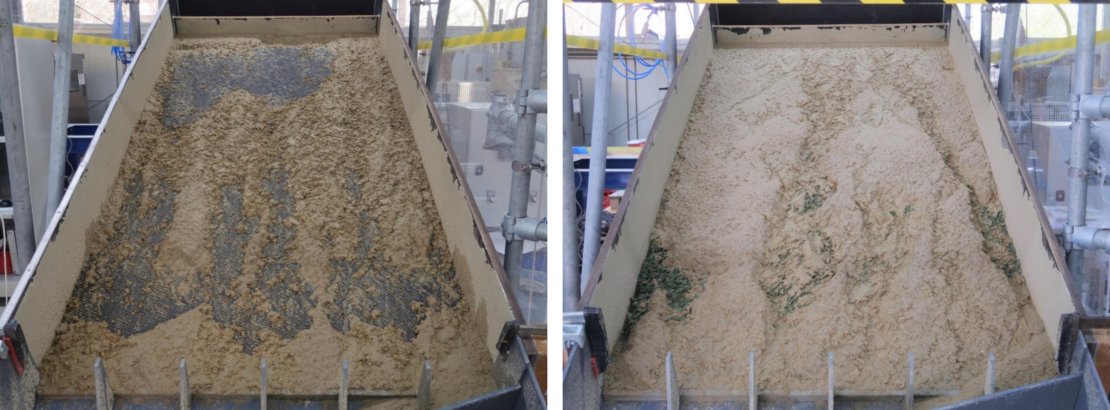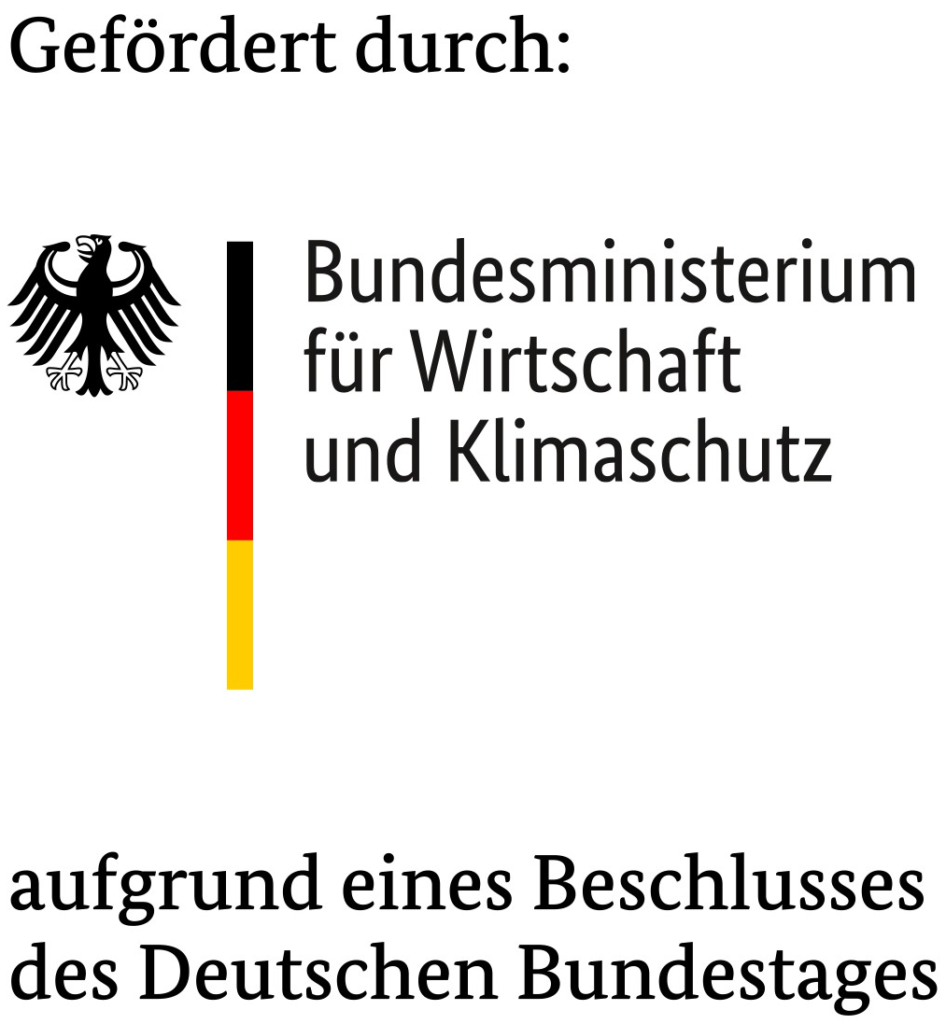Project
Tufted geotextiles - Upgrading of geotextiles using novel textile structures for improved erosion protection
Handout - Getuftete Geotextilien 2023
The aim of the research project was to develop tufted geotextiles which, due to their choice of materials and construction, are particularly suitable for use in erosion control and enable functional upgrading compared to existing products.
First, a catalogue of requirements was developed, which was linked to material and construction parameters in a performance catalogue for the tufted geotextile. Four installation situations were defined as application cases. The processability of the selected primary backing and pile yarn materials in the tufting process and their suitability in principle as geotextiles were tested. Subsequently, constructions were defined and developed in the tufting process. For sufficient pile binding of the synthetic variants, the first functional samples were provided with a latex coating. Later, the pile integration was realised by the thermobonding process. In addition, an analysis of the tufting process was carried out and the needle penetration forces on different backing materials were determined. In a video analysis, it was shown that the selected material can be perfectly processed in the tufting process. Digital microscopy of the tufting tools did not reveal any unusual wear.
The functional samples were subjected to an erosion test regarding the ground cover. Large-scale samples were developed with the design features that were suitable for soil retention, and these were subjected to a simulation of heavy rainfall events. A test rig and a measurement method for this simulation were developed. Microscopic examinations of the pile yarns provided information about possible effects of soil retention. Based on the determined pile yarn pull-out forces, statements could be made about the necessary pile yarn integration. In the tests on shear strength and in the inclined plane test, the bonding effect between the slope inclination and the tufted geotextile was clarified. Many tests were carried out on the mechanical and hydraulic properties of the synthetic and the natural fibre demonstrator in comparison with the pure carrier materials.
With the help of a finite element calculation, no improved load-bearing capacity of the embankment could be demonstrated by incorporating the textiles. An increase in serviceability is given by improved erosion properties against rain events. The developed calculation model considers the changed load-bearing behaviour of the tufted geotextiles. The most target-oriented design data and materials for the application cases investigated here were identified and further developed in four large-scale demonstrators (synthetic and natural fibre) and subjected to investigations, also in comparison to the pure carrier materials. These investigations also confirm that the tufted geotextiles contribute to significantly reducing soil erosion during heavy rainfall events compared to the untufted geotextiles.

Results:
The research results were transferred into a guideline, which is structured according to the five criteria of the catalogue of requirements. It describes dependencies on the installation situations and requirements on the tufted geotextile and assigns dependencies regarding material and construction. Two demonstrators (synthetic demonstrator, natural fibre demonstrator) were used as examples for the ecological and economic assessment. The assessment shows that the impact categories are mainly dominated by raw material supply and production. Since the natural fibre demonstrator remains in the soil, there is no disposal. The economic balancing showed that for the demonstrators developed here, the material costs of yarn and carrier exert the greatest influence on the price per square metre of the tufted geotextile. The natural fibre geotextile is significantly cheaper than the synthetic fibre geotextile.
In summary, based on the research results, it can be said that the incorporation of three-dimensional textile structures in geotextiles helps to minimise soil erosion. This means, for example, that embankments constructed with tufted geotextiles can withstand heavy rainfall events for longer than those constructed with pure fabrics. The ecologically sound and economic development of tufted geotextiles is particularly possible when natural fibre materials are used as carriers and pile yarns.
Project partners and/or other research institutes
2. Forschungseinrichtung:
FH Münster; Fachbereich Bauingenieurwesen; Geotechnik und Bauverfahrenstechnik
Projektbegleitender Ausschuss:
- Bermüller & Co GmbH
- Freudenberg Performance Materials SE & Co. KG
- GEOScope GmbH & Co. KG
- Huesker Synthetic GmbH
- Neisser Geoprodukte GmbH
- Schlenter Production GmbH
- Naue GmbH & Co. KG
- Tensar International GmbH
- Textech Struve GmbH
- Stadt Münster
Acknowledgement
The IGF project “Improvement of Geotextiles through the Use of Novel Textile Structures for Improved Erosion Protection” 20323 N / 1 of the Forschungsvereinigung Forschungs¬kuratorium Textil e.V., Reinhardtstraße 14-16, 10117 Berlin was funded by the Federal Ministry of Economic Affairs and Climate Action via the AiF within the framework of the programme for the promotion of joint industrial research and development (IGF) based on a resolution of the German Federal Parliament.
YOUR CONTACT PERSON


